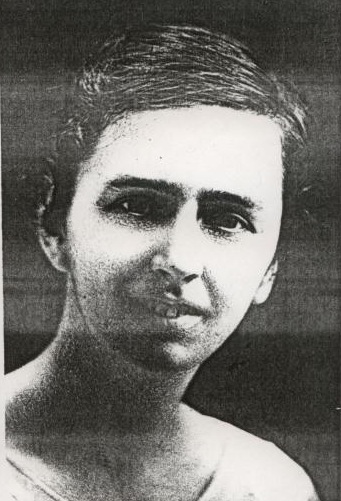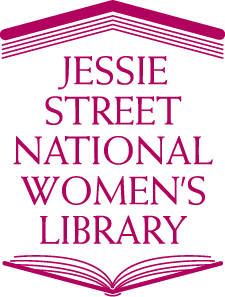Tapestry
“For all the dinners are cooked; the plates and cups washed; the children sent to school and gone out in the world. Nothing remains of it. All has vanished. No biography or history has a word to say about it. And the novels, without meaning to, inevitably lie! All these infinitely obscure lives remain to be recorded.” — Virginia Woolf, English author and feminist
Weaving your tapestry
The Library initiated the Tapestry Project to document and acknowledge the lives of Australian women that are not recorded anywhere else. These stories, told by friends or family members, are of the everyday experiences of women that are often lost or overlooked. The Tapestry Project encourages women to write their own stories or those of their mother, grandmother or friend. Some are available online while others can be accessed at the Library itself. The stories highlighted here are just a sample of the stories that the Library has collected of the extraordinary, unrecognised contributions made by women to Australian society and together, they form a valuable social document of the richness and diversity of women’s lives.
Women are encouraged to add their story or that of another woman they think should be acknowledged. Please contact the Library at for information about contributing to The Tapestry Project.
Winnie Edith Edwards
By working on the farm without wages during the Depression years, Winnie enabled her parents to keep the farm and bring up a happy family.
Antonina Komarowski
With no doubt in my mind I agreed to leave my parents but I was uncertain when I would see them next since I would not be able to afford to do the 500km journey often.
Helena Richmond Meaney
Helena felt that the knee would have to be stitched or the result would be a stiff knee. As it was dusk, there was no question of driving many miles in a sulky to a doctor so Helena stitched the knee herself.

Margaret Ruby Hughes
I wanted very much to train as a teacher but my father, now an invalid, had different ideas, the old fashioned idea was that girls should stay home until they were married and help their mother. I had different ideas, I took a position as a governess…
Jill Hunter
Dad was a wonderful father, but I do remember that when ‘things’ went wrong during my teenage years I blamed it all on the fact that I had no mother!

Adeline (Chaplin) Mellington
Adeline hand reared foals, poddy calves, lambs and chooks and cared for sick animals, and when needed ‘bogged’ in to help with outside farm work, stooking hay, cutting chaff, wheat cleaning, etc.
Sheila Hungerford
She brought a lot of happiness to lonely women in isolated areas, and often showed them how to be resourceful and cope with the harshness that must have been prevalent at that time in Queensland.
Jean Ingall Cooke
When the Second World War came and after the Japanese entered the war Roy joined the permanent V.D.C. so Jean carried on at the farm with the help of her teenage son Alf.
Madge Edis Pickburn née Morris
As Dad was a curate without a Parish their engagement had to be for seven years. Madge still taught at St Catherine’s and was only allowed on the occasional weekend leave.
Maud Mary Beckett
My mother was a member of a courageous generation of women who welcomed their husbands back from WW1, established their homes, bore their children, endured the Depression and then saw their sons off to WW2.

Marjorie Grace Simpson
One night whilst dyeing my hair, I decided to go nursing. I was influenced by a neighboring family with three daughters, all of whom were nurses.
Janie Pearce
She came back to the family farm at Boisdale and I can remember some R.A.A.F men coming to interview her, to get relevant information to help in the war effort in and around Dobu,.Goodenough, Samari islands off the tip of Papua.

Hilda Finnerty
Mum was particular about our speech and we were corrected as necessary. By the time that we were at school we were given a grammatical explanation when corrected.
Clara Weston
The Parson children played with Captain Watson’s at the lighthouse. Clara was 19 when the ‘Dunbar’ was wrecked at The Gap and remembered life-long the terrible cries borne on the wind that night in 1858.
Margaret Pearl Fraser
Margaret always wanted to train as a nurse but due to the financial constraints of the late 1890s and early 1900s she joined her eldest sister Violet in a dress making venture to pay off their father’s coach building debts.
Elizabeth Astbury (née Andrew)
Although untrained. Granny delivered most of the babies around the district. It would mean at least a ten-mile round trip to find and alert the doctor, and then he had to either come on horseback or horseback vehicle.
Daisy Peaters
The year was 1903. Daisy Peaters was fourteen and lived on Fig Tree farm near Gundagai with her family and Elsley, the left boy, whose parents never returned for him.
Gertrude Myrtle Leggo
In her early twenties Ida began being involved in community affairs and helped raise money for the building of the Daylesford hospital in a ‘Queen Carnival’ where she played the ‘Queen’.
Lillian Mackay
At one time she held every nursing certificate it was possible for a nurse to hold. For many years she ran a private hospital at Cohuna specialising in children. Many cases were sent from Melbourne, and her hospital was always full.

Edna Dorothy Briggs
Among Edna Briggs’s chief characteristics were her interest in science and knowledge, her strong social concern, and the way she supported others — especially her husband and daughters — at times at the expense of the fulfilment of some of her own hopes.

